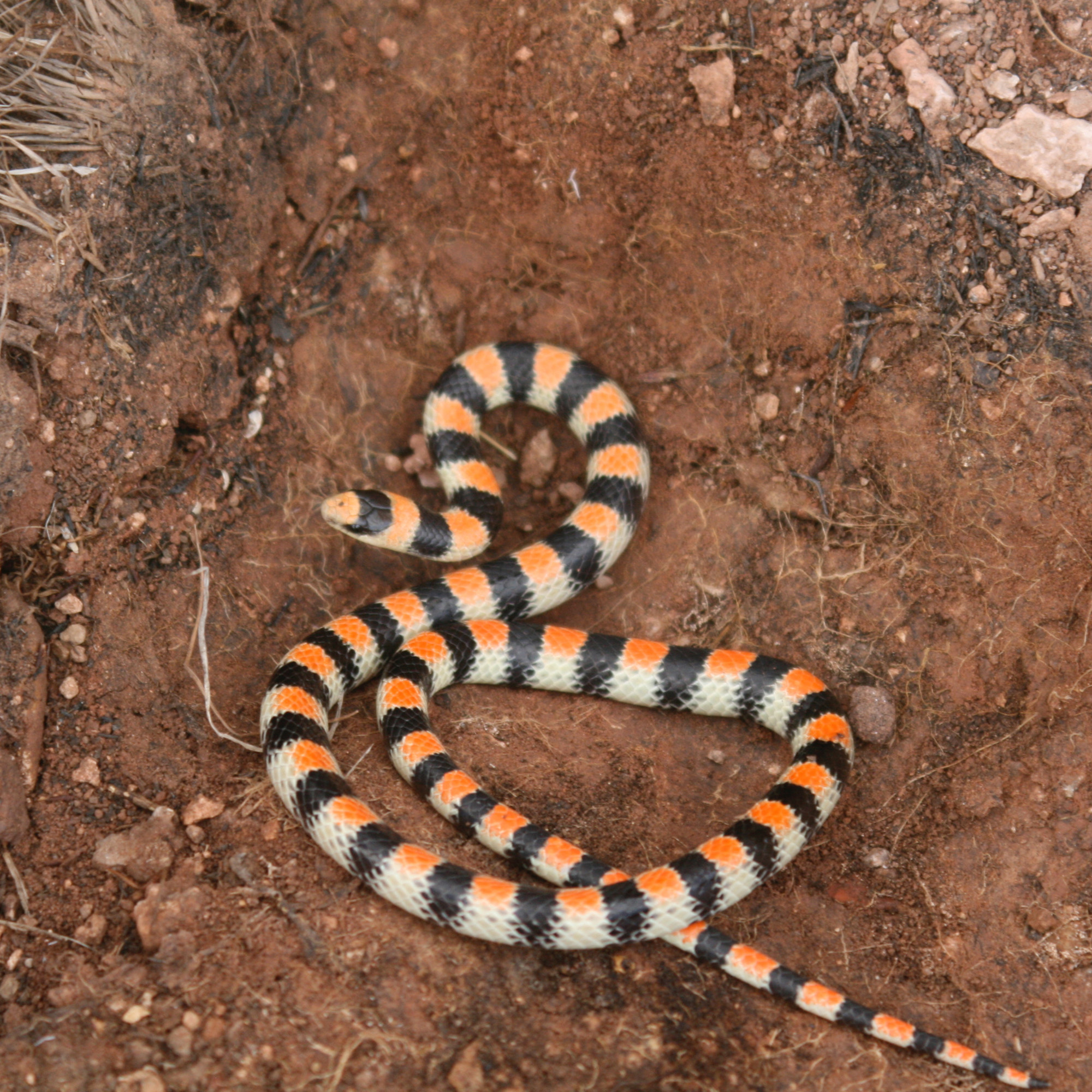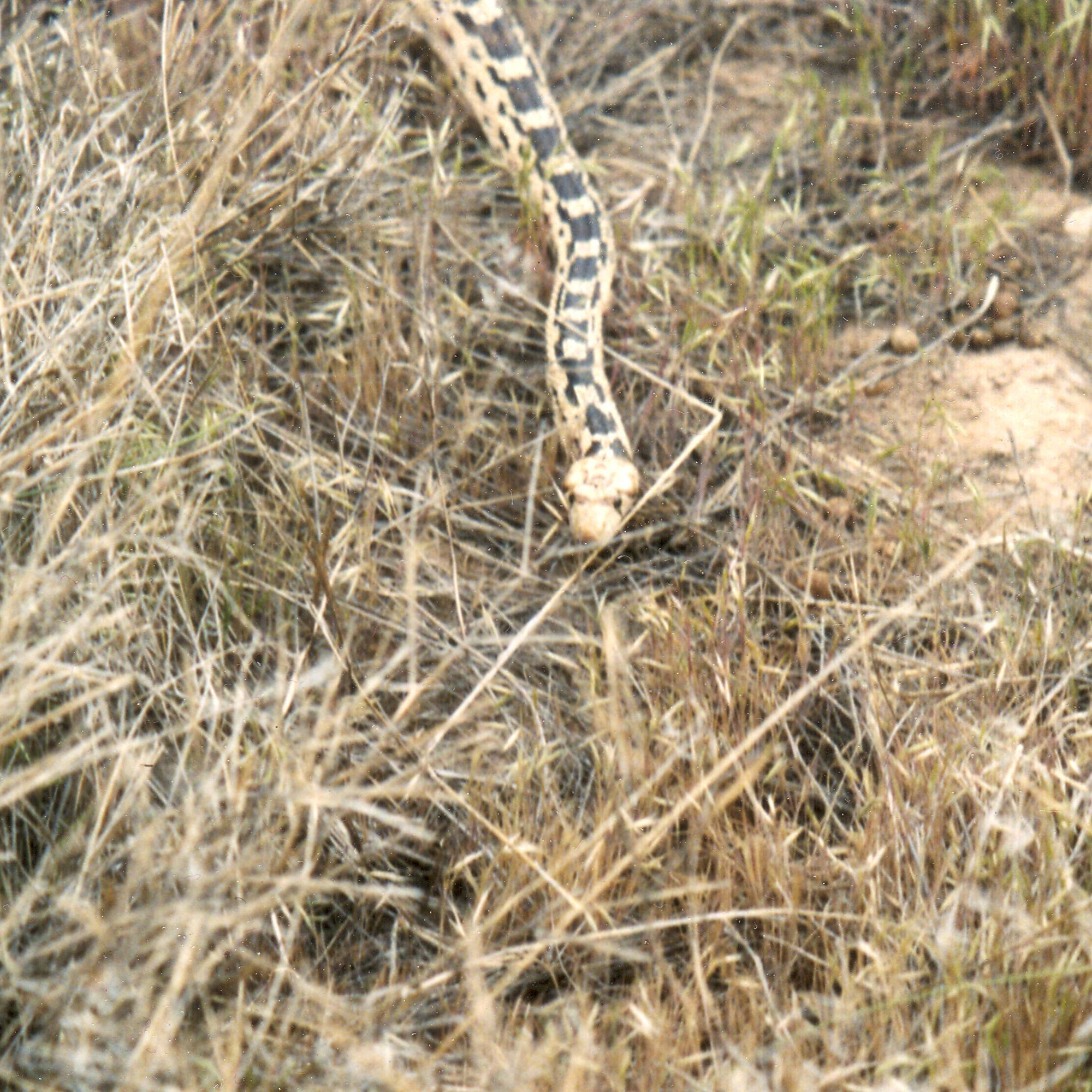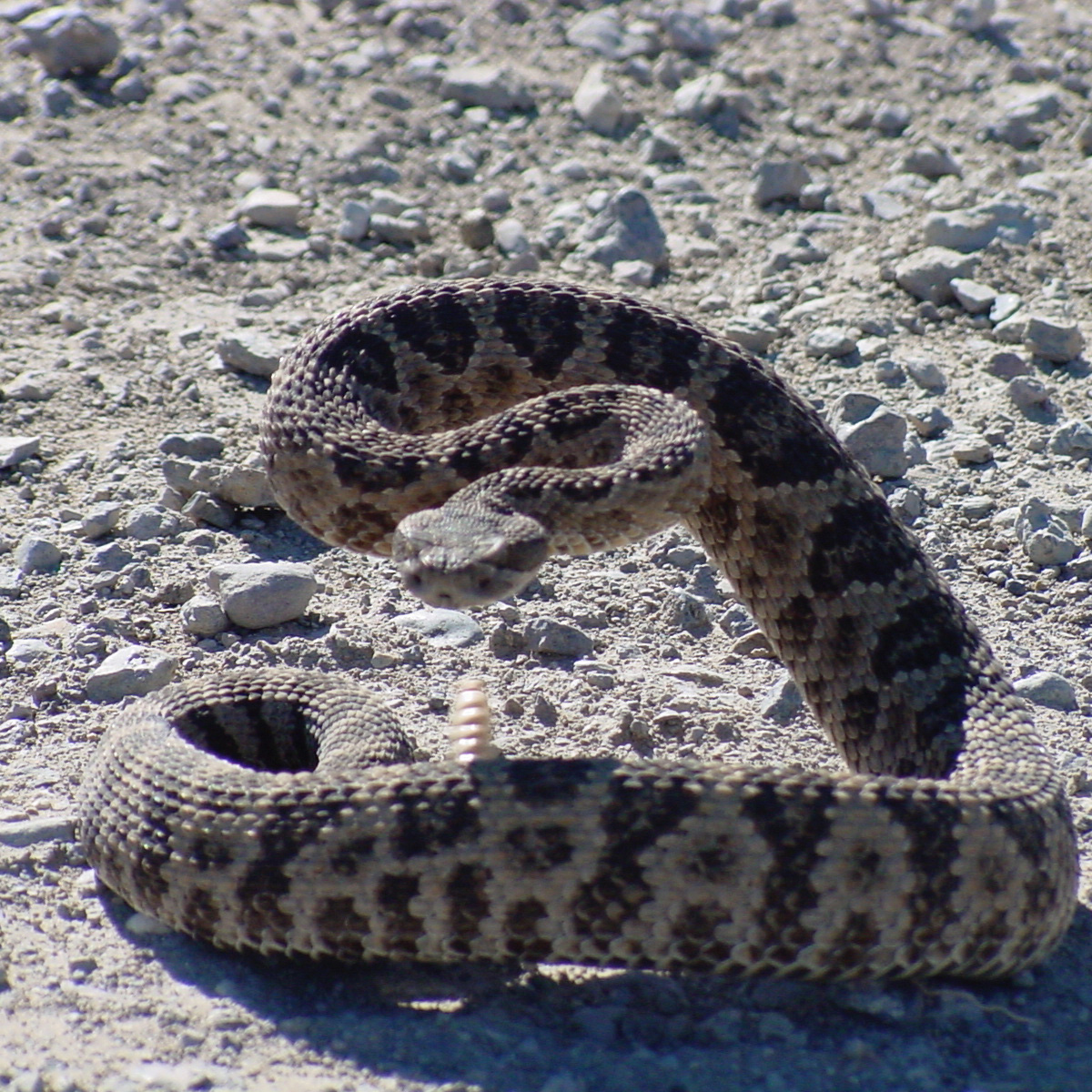
Snakes in the Sun: How to Avoid Rattling Reptiles
By: Nicki Frey, Utah State University Extension wildlife specialist, Nicki.Frey@usu.edu
Humans aren’t the only ones eager for the sun this summer. Snakes are out in abundance and can be found warming up along roads, sunning themselves on rocks, and slithering casually to their next meal. And with more people hitting the trails than ever before, reports of snakes and snakebites are becoming common.
The good news is that most snake species in Utah are non-venomous – only seven of the 31 species produce venom. And most Utah snakes are nocturnal, so you likely won’t see them often. Snakes are ectotherms, or cold-blooded, meaning they get warmth from their environment. As the sun warms our rocky Utah landscapes, snakes use that to their advantage to heat up and save energy. Most snakes encountered during the day are curled up and napping. When they are startled by humans walking, climbing, or sitting next to them, they may strike; however, most snakes generally sit quietly, hoping to go unnoticed.
Except for western terrestrial garter snakes, all venomous snakes in Utah are rattlesnakes, classified as pit vipers (Viperidae). Their thick bodies, rough scales, and distinct necks give them a diamond-shaped head, making them relatively easy to distinguish. No diamond-shaped head? No worry.
While dangerous, rattlesnakes are also mild-mannered. They are timid and usually hide, using their rattle to avoid confrontation. Unprovoked rattlesnake bites are rare. Their bodies need to be coiled in order to strike. Rattlesnake diets vary by species, but some can eat animals as large as a rabbit.

Consider these tips to avoid a snake confrontation.
- Be aware of where you walk, sit, and play when outdoors. Utah’s rocky terrain and intense sun are perfect for snakes. Rock climbers are particularly susceptible to accidental encounters.
- If you see a snake, admire it from a distance. Give it space so it doesn’t feel cornered and defensive and can move away to a place where it feels safe.
- Don’t touch the snake. Seriously. Don’t touch the snake. It’s surprising how many people become intrigued and want to touch them!
- If you hear rattling, freeze. Look around to locate the snake, back away to a safe distance, then leave the area. Don’t jump or run since you could jump or run toward the snake, increasing your chances of getting bit.

Rattlesnake Bites
- If a snake has bitten you or someone you are with, the wound should be treated immediately. Wash it thoroughly with soap and water or alcohol. Place a bandage over the wound to protect it from dirt. Even if the snake is non-venomous, seek medical attention as soon as possible to be safe.
- Don’t kill the snake, but take a picture of it for identification. Each species has a different type of venom that reacts at a different pace, but all rattlesnake bites are treated with the same anti-venom.
- Avoid common misconceptions about treating snake bites. Do not apply a tourniquet above the bite, use venom extractors, slice the wound to increase bleeding, or apply ice. Rattlesnake venom does not travel through veins, it travels through connective tissue and the lymphatic system. Do not take any medication until a medical professional advises you to do so.
- Keep the wound clean, stay calm, and seek medical attention immediately. Take off any rings or restrictive items, as the wound and associated tissue will swell. If you are not close to a hospital, call 911 to arrange for someone to meet you. You can also call ahead to the nearest hospital and alert them to prepare the anti-venom.
- All rattlesnake bites will cause discomfort, but a bite from a Mojave rattlesnake has neurotoxic properties that can sometimes cause death. All rattlesnake bites result in necrosis or death of the skin and tissue near the bite, which can be reduced with prompt medical attention. The bite location will quickly swell and begin to discolor. Other symptoms include nausea, rapid pulse, and loss of muscle coordination. In some cases, neurological issues can appear.
- Because of the variety of symptoms, monitor the victim to ensure his or her safety. Check breathing, heart rate, muscle coordination, and signs of shock. In many cases, it is safe for the victim to walk to a vehicle and travel to a hospital. However, depending on the individual’s health, age, size, and they bite intensity, some reactions can instantly become severe. In this case, have the victim lie flat and call 911. Continue to monitor their status until emergency services arrive.
Stay safe as you savor the summer sun, and be mindful of rattling reptiles.



